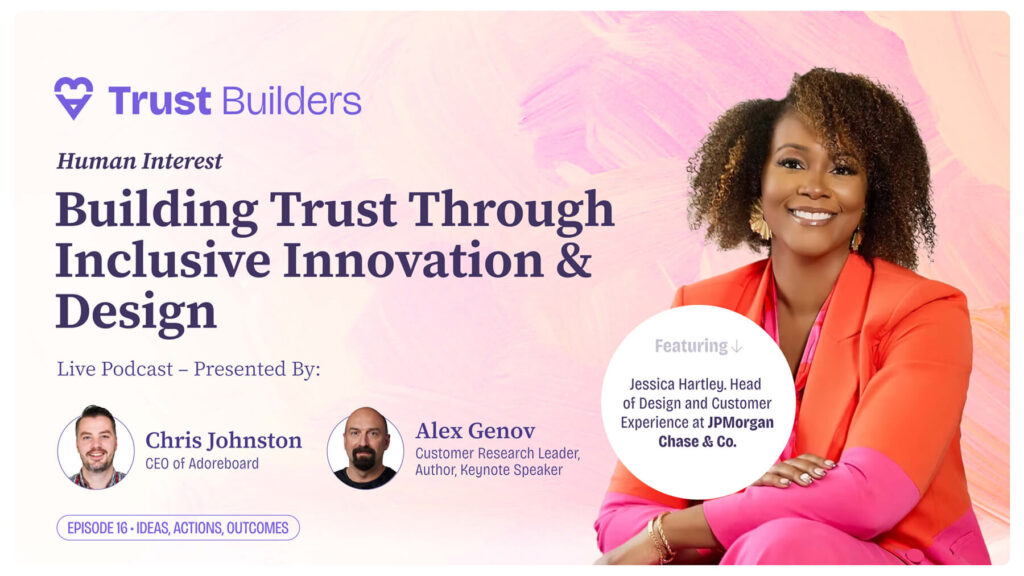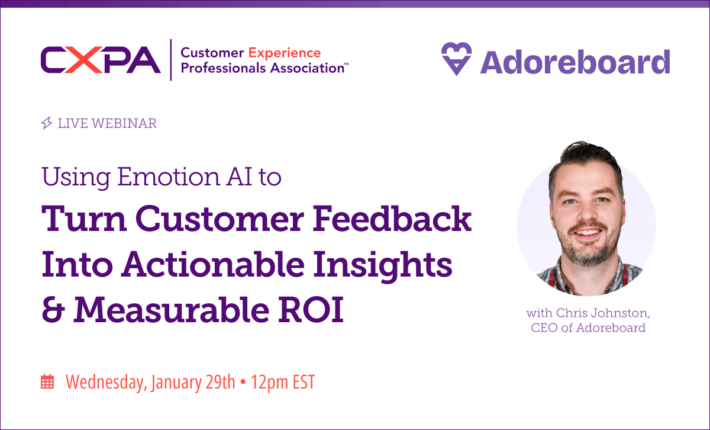Text analysis in business has been around since the 1950’s when IBM created the first system to retrieve key words from large bodies of written information. However, like with massive pompadours and drive-in movie theatres, we’ve moved on a bit since then.
The data locked away in the reams of text you generate from interacting with customers is the key to predicting how you can best improve the experiences around your business. Firms that figure out how to use this will have an immediate advantage over their competitors. Thankfully, you don’t have to figure it all out, Adoreboard already did.
Set change in motion with emotion
Businesses have been using sentiment metrics like NPS and CSAT for decades now. While they’ve provided decent benchmarks for how they’re performing in the eyes of their customers, they don’t exactly provide the full toolset to build towards improvement.
For instance, you could love your phone’s camera but hate the battery life. If the manufacturer only sees a positive score because, on balance, it’s a decent phone, they won’t have the push to improve the battery and making it an even greater product.
Nowadays, we need the information we gather from customers to tell a story and inform us how we can actively and effectively improve. We’re moving from a binary ‘black and white’ view of customer feedback to full, glorious high definition. This means viewing your customers as – shock horror – people instead of percentages.
It’s difficult to present a sentiment score at board level and it’s even harder to action it. Adoreboard analyses thousands of comments and lines of text in a matter of seconds, identifies themes, links them to an emotional intensity, and scores it. These predictive insights help you gauge what the business impact would be if you focused on a specific problem area.
The return on time and investment is much higher when we take CX into account. Adoreboard predicts the ROI you’ll get on each recommendation made based on your emotional scores – with excellent accuracy if we do say so ourselves. For example, say your customers were registering a significant amount of disgust when referring to your app. We’ll predict that changing emotional responses to this touchpoint from disgust to joy will lead to a 5% increase in NPS and a notable improvement in revenue. Now that’s something you can present at board level.
Methods for success
Predictive insights mean you can take what you’re already being told and use this to drive areas which will be most effective in giving your CX the biggest push.
Adoreboard worked with insurance giant Allstate to improve their CSAT score and, after absorbing customer feedback, service calls, and complaints, identified issues with their app as a major driver of anger. The predictive insights gained estimated that their overall CSAT score would rise by 17% if specific functionality issues were resolved. Sure enough, once actioned, they saw a 16.8% increase.
That said, each industry will have different methods for success. We’ve drawn from our wealth of experience with global leaders across sectors for some handy examples.
Health organisations
In private hospitals around the world, a patient should be the main focus. Seems obvious really, but you’d be surprised by the number of organisations that fail to conflate patient experience with customer experience. After all, they’re paying for a service just like any other customer.
Australian healthcare provider Healthscope used Adoreboard to examine patient feedback to see how they could improve and become the repeat provider for more people. Their findings saw that an overwhelming number of patients expressed anger or disgust at things that seasoned medical professionals wouldn’t think of as issues. The tightness of blood pressure machines at night along with a less than sympathetic response to complaints provided predictive insights that accurately suggested that training in this area would push CSAT scores up overall – which, naturally, was the case.
Government organisations
Who decides whether or not governments stay in power? Citizens, that’s who. That’s why governments and public sector organisations need to gauge emotional sentiment to predict how to best improve in the eyes of the electorate. According to Qualtrics, citizen experience is ‘the sum accumulation of “moments of truth”’ which a person has when interacting with government. It culminates in their perception of the government as a whole based on touch points like accessing services, transactions, receiving benefits, etc.
Improving citizen experience increases trust in the government – it’s the perfect PR exercise. According the McKinsey & Company, citizens are 9 times more likely to trust a government agency when they get a good experience.
Data points like polling data, citizen surveys, calls to public services, and more, provide a goldmine from which predictive insights can show which specific services and agencies can be focused on to improve trust in the government as a whole.
Universities
Those with student loans to pay know all too well that there’s a lot financially at stake in higher education. Universities need to make sure their student experience is optimised in order to attract future pupils, improving their standing in league tables and funding.
By collecting data on aspects like mentorship, student employment, residential communities, social clubs, even night life (apparently this is important to students), you can get an emotional score to see just where student experience can be improved for a happier campus.
Many studies collate data from interviews, focus groups, surveys, and even academic performance to crease a holistic dataset around a student’s ‘lifecycle’. Combining qualitative data from interviews and focus groups, where you can identify key areas where students register negative emotions, with quantitative data like exam results, provides an excellent position on which to benchmark and develop student experience.
Call centres
A good customer experience with a call centre is the difference between continued business and a string of negative reviews. At the end of the day, time is money, so you want to reduce the amount of time to resolution to get people back to enjoying your business. According to Forbes, customer-centric companies are 60% more profitable than those that don’t care, so make sure they’re taken care of!
Assuming calls to your business are recorded, they’re a perfect source of emotional data to really get to know your customers and how they feel about your offering. By noting patterns in customer calls, you learn where their main pressure points are, develop a narrative around the customer journey, and use predictive insights to optimise their experience to make it as smooth as possible. Simplicity and ease of use make for loyal customers, so use this opportunity to reduce calls to your support staff, along with resolution times for repeat business and active promoters of your business.
SaaS businesses
Software as a Service businesses, since they’re less focuses on shifting units, need to focus on increasing retention and reducing churn. Taking into account the number of pain points that influence different types of people to jump off a subscription or software, it can be a tricky path to navigate.
Considering it can cost around 6-7 times as much to acquire a new customer compared to the cost of retaining one, reducing churn by even a tiny amount is imperative to long term profitability. The investment in ensuring that your customers, each having different parts of your relationship that they like and don’t like, have the smoothest time using your software returns a model far more geared to sustainable growth. Use their own words to predict what drives good customer experience in their eyes and identify what can be improved to catch them before they fall away.
Predictions mean profit
Long gone are they days where ‘the customer knows best’ simply meant ‘don’t argue back when someone returns something’. The customer, in whatever form, knows exactly what makes a good experience for them and can offer that information up in a number of ways.
Use this data and predictive insights to learn where exactly you can improve even a small amount to return the most amount of investment. A little tweak to a customer pain point that you might not register as an issue could mean the difference between long term sustainable growth and a loss of profits.
Adoreboard’s predictive insights mean you can judge these with startling accuracy. You can take the guess work and manual labour out of sifting through customer feedback and unstructured data and return quick, simple scores and recommendations on which to build an actionable strategy.
Don’t let all your data waste away in a spreadsheet; use it to build towards greater CX and a better business.







